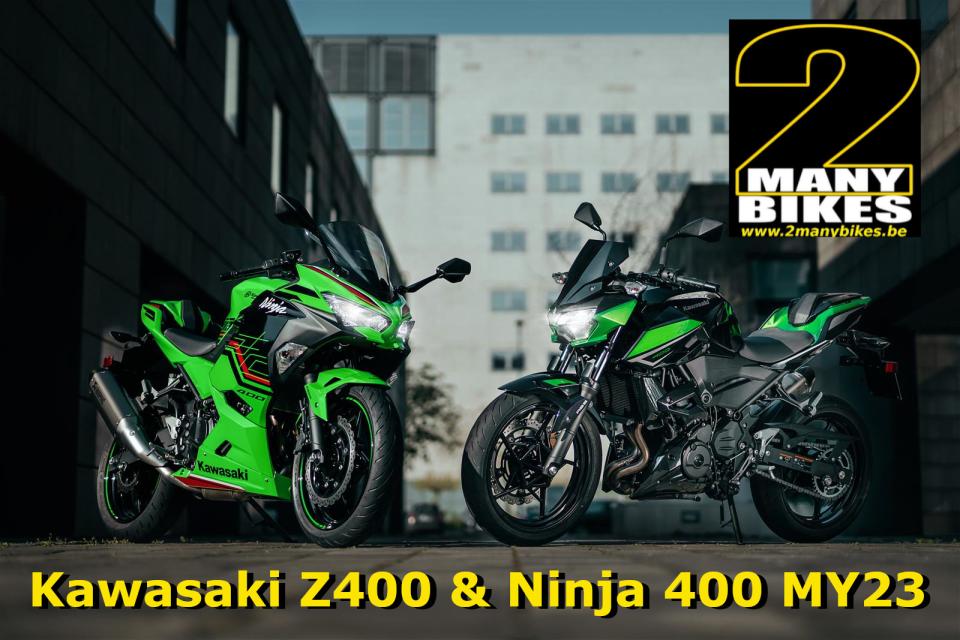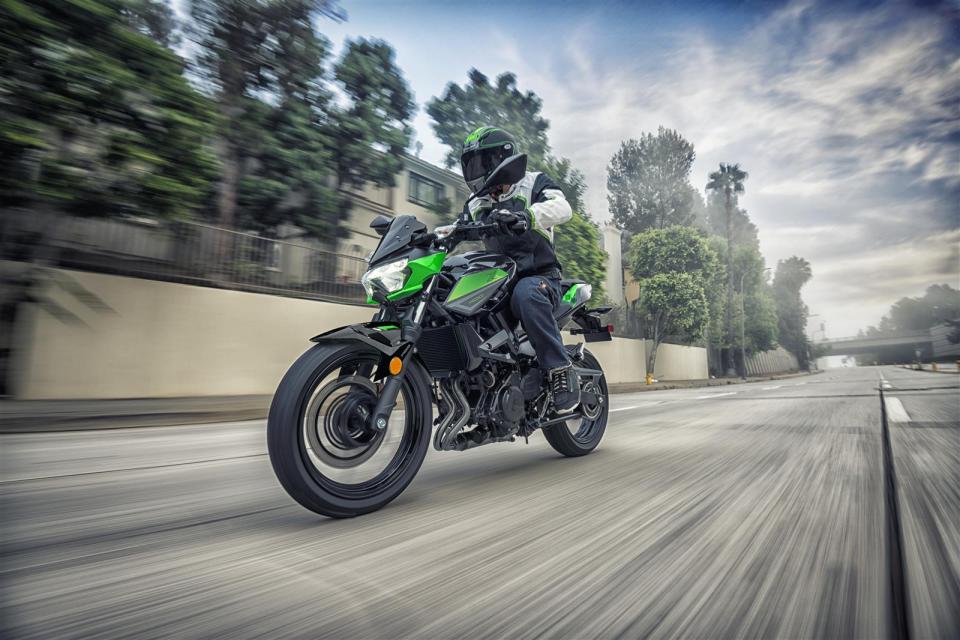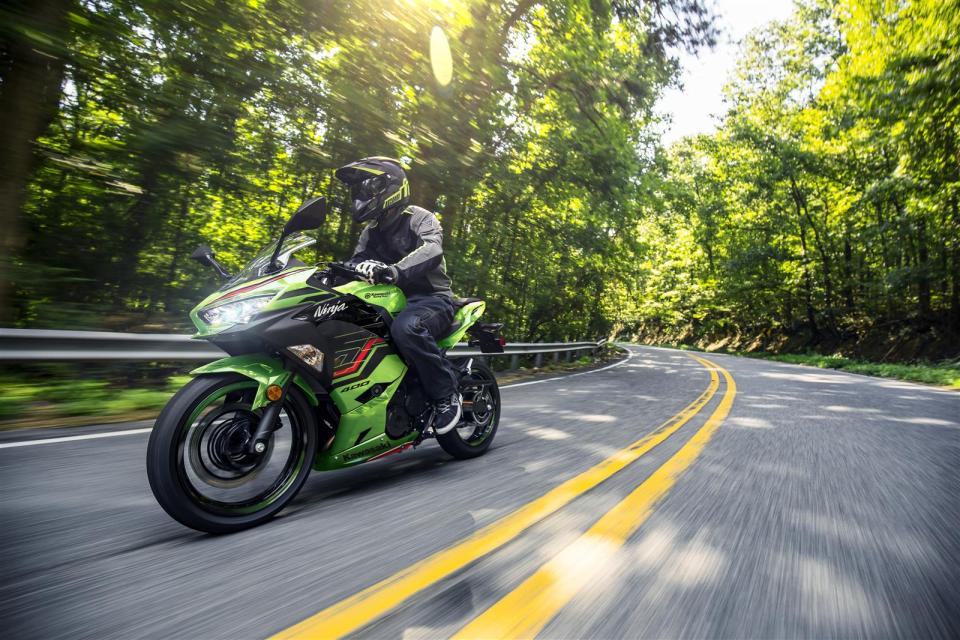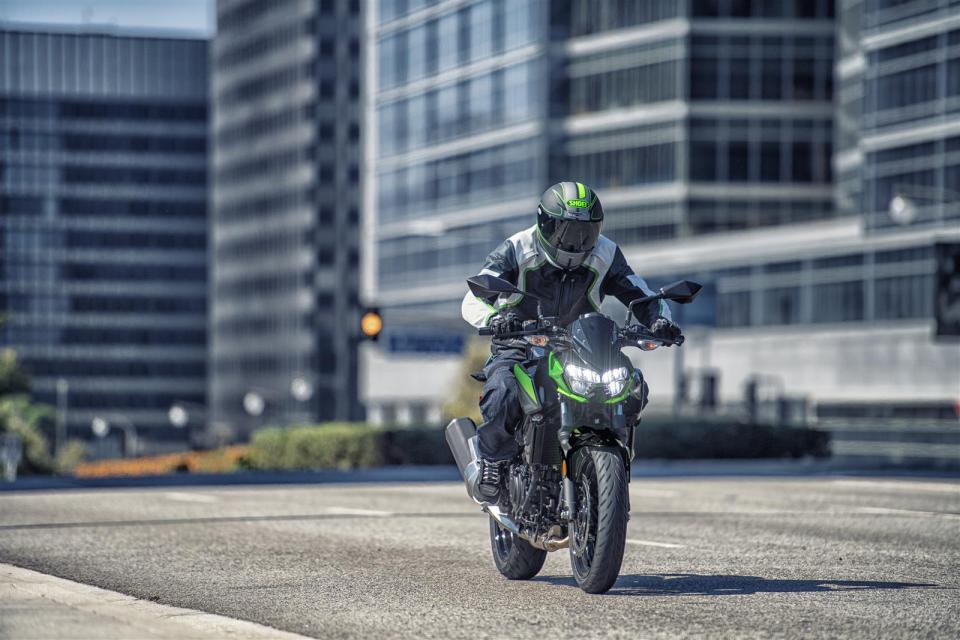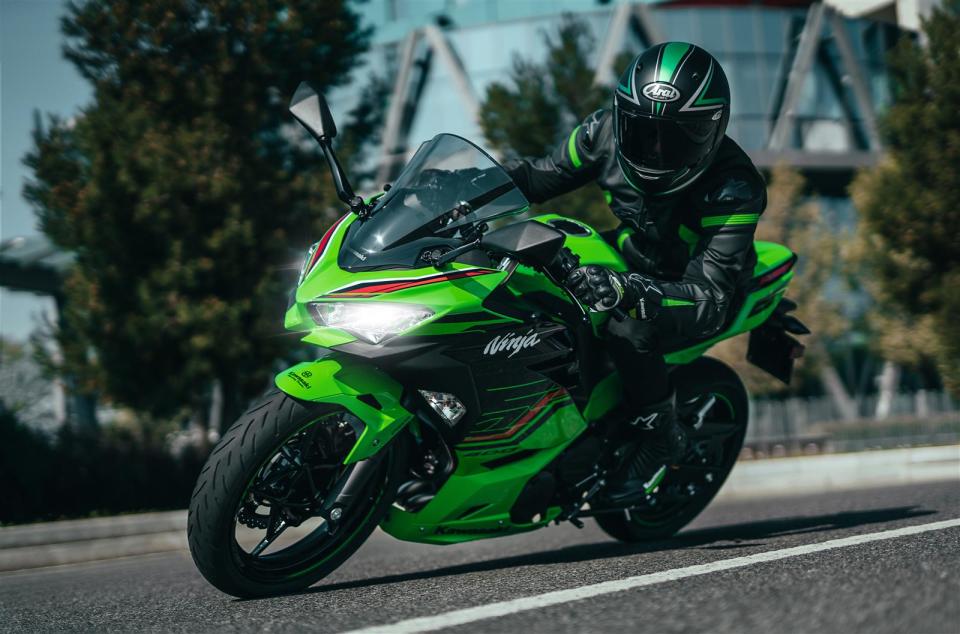Both models are equipped with a powerful 399cc parallel twin. The 45 hp engine guarantees a high-torque character, low consumption and is now also Euro5-approved without loss of power.
An Assist & Slipperclutch provides light clutch operation and makes a locking rear wheel during early downshifts a thing of the past.
The basis of the chassis is an extremely light Trellis tubular frame with the engine block as a load-bearing part.
By using advanced analysis technology during the design phase, the rigidity of the frame is optimal.
A short wheelbase combined with a long swingarm and steep head tube angle results in the crisp handling that the Kawasaki 400s are known for.
The 41mm telescopic fork and 310mm front disc brake further emphasize the maturity of these models while the curb weight is just 167kg for the Z400, the Ninja 400 is 168kg.
With its sharp Sugomi styling and striking LED headlight, the Z400 is immediately recognizable as a family of the Z900 and Z650.
From the saddle, the rider looks out on a multifunctional LCD display, on which you can clearly find the rpm, speed, current gear, fuel level, mileage, trip meters, coolant temperature, ECO indicator and clock.
With a seat height of 785mm and a slim build, the Z400 is very accessible to a wide range of riders. An optional raised seat is available to give taller riders more legroom.
The Ninja 400 proved itself extremely successful in the WorldSSP300 in recent seasons by winning the championship for four years in a row.
The addition of raised clip-ons makes the Ninja a real sportsman without being uncomfortable.
Behind the top fairing, with the trademark Ninja styling and dual LED headlights, is an analog tachometer with a multifunction display next to it, which has the same functionalities as those of the Z400.

